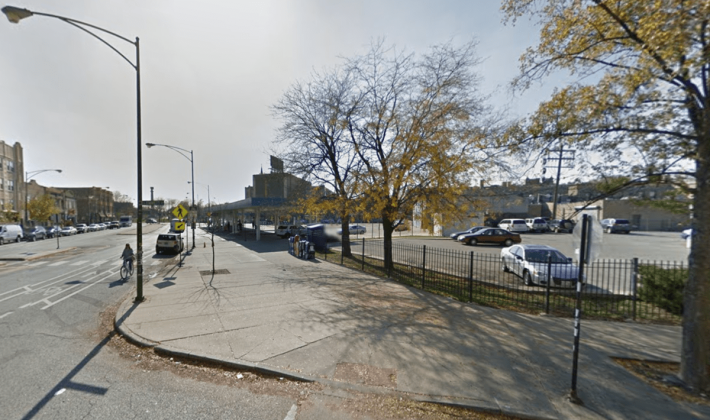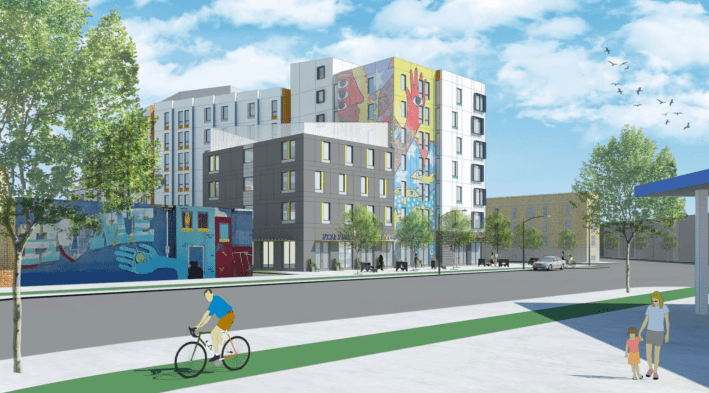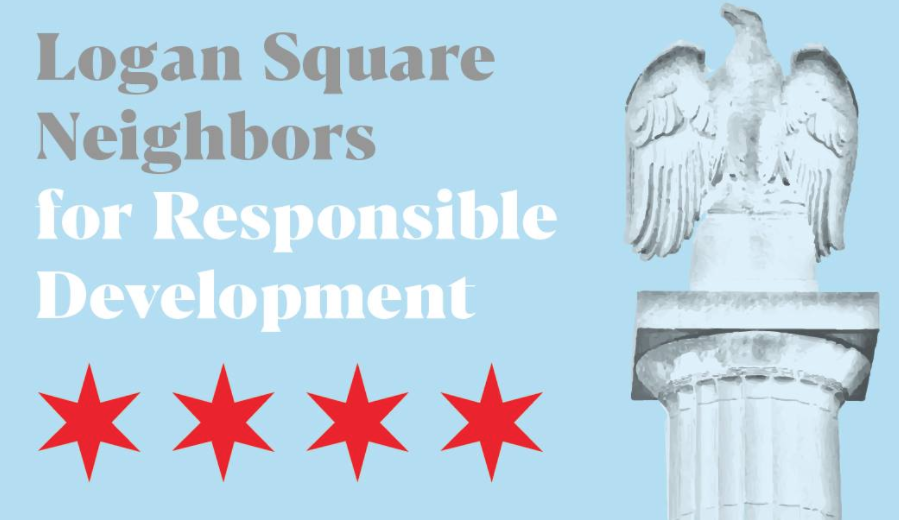The proposal for a 100-percent affordable transit-oriented development next to the Logan Square station is getting closer to becoming a reality, although it's facing some resistance from a recently formed neighborhood group that's trying to undermine the plan. On April 24 at 6:30 p.m, there will be a community meeting at Logandale Middle School, 3212 West George Street, about the proposed zoning change to allow the structure on the Emmett Street parking lot, adjacent to the ‘L’ stop.
Not-for-profit affordable housing developer Bickerdike Redevelopment Corporation has worked with Landon Bone Baker Architects, the Chicago Housing Authority, the city’s Department of Planning and Development, Logan Square Neighborhood Association, Logan Square Preservation, and 35th Ward Alderman Carlos Rosa to develop the proposal for the lot.

The 100-unit building would be a mix of one, two, and three bedroom units. It would include 20 on-site parking spots, a plaza at the corner of Kedzie Avenue and Emmett, and a rooftop garden. All of the units would be affordable to Chicagoans earning at or below 60-percent of the Area Median Income, currently $35,580 per year for an individual, and $50,760 per year for a family of four.
Since 2016, residents have been organizing in support for the project, including collecting petition signatures. The idea first took root through an initiative by the Metropolitan Planning Council and then-aldermen Rey Colón to gather data and ideas for underutilized spaces near the Logan stop, including the parking lot. Workshop participants and online respondents specifically indicated a desire for housing at the Emmett Street lot and expressed an interest in making 50-100 percent of the units affordable.

The development is expected to cost approximately $31 million to construct, and will be financed through a combination of funding from the CHA, housing tax credits, and the Fullerton/Milwaukee TIF. In addition, the city will sell this valuable land parcel to Bickerdike for $1, which is key for making the project financially viable.
Though the development has been endorsed by a variety of neighborhood organizations, including Logan Square is Home, a coalition formed specifically in support of the project, there are some residents who aren’t so enthusiastic about the project.

A group called Logan Square Neighbors for Responsible Development, which launched as an LLC just last week, has posted a Facebook page to outline some of their concerns with the site. One of the founders of the LLC is Josh Hutchison, an architect with firm, 34-Ten Architecture, who in 2016 proposed an open-air market on the site, a plan that included zero housing.
Most of the concerns center on what they see as a loss of public access to the site and too few parking spots “to support the community.”
The group is calling for more proposals to be considered for the site before the affordable development moves forward. On one post they write, “Tell our officials we should not be rushing through a half-baked project that does not align with community input.”
While it’s fair to share criticisms of the project, calling it “half-baked” is an attempt to delegitimize a thorough community input process. The project has been in the works for over two years with reputable organizations gathering feedback from residents. The project is also legitimized by the MPC research project that showed that residents want to build affordable housing to serve residents who are vulnerable to being displaced from Logan Square as it continues to gentrify and housing costs soar ever upward. So far, Chicago’s TOD development boom, including in Logan Square has almost entirely involved upscale apartment and condo buildings with only modest amounts of on-site affordable housing, at best. A project like this has the potential to demonstrate what equitable TOD can look like, and set a good example for other parts of the city,
Another post on the Logan Square Neighbors for Responsible Development page says, “The reality is that if this lot is converted and all parking eliminated, people and local businesses will suffer.” While it’s understandable that some residents have that perception, incorporating large amounts of parking in new developments drives up construction and housing costs and therefore makes the projects less equitable. It also encourages car ownership, which undermines the potential of locations near transit stations.
Creating a transit-oriented neighborhood is a multi-layered process. Arguably, the recent building spree along the Blue Line corridor in Logan Square has not been in an equitable way, as luxury TODs have sprung up on Milwaukee Avenue and single-family homes have replaced three-flats throughout the neighborhood. With this proposed 100-percent, 100-unit affordable housing development, we can finally have an example of what it means to have responsible development in Logan Square.




